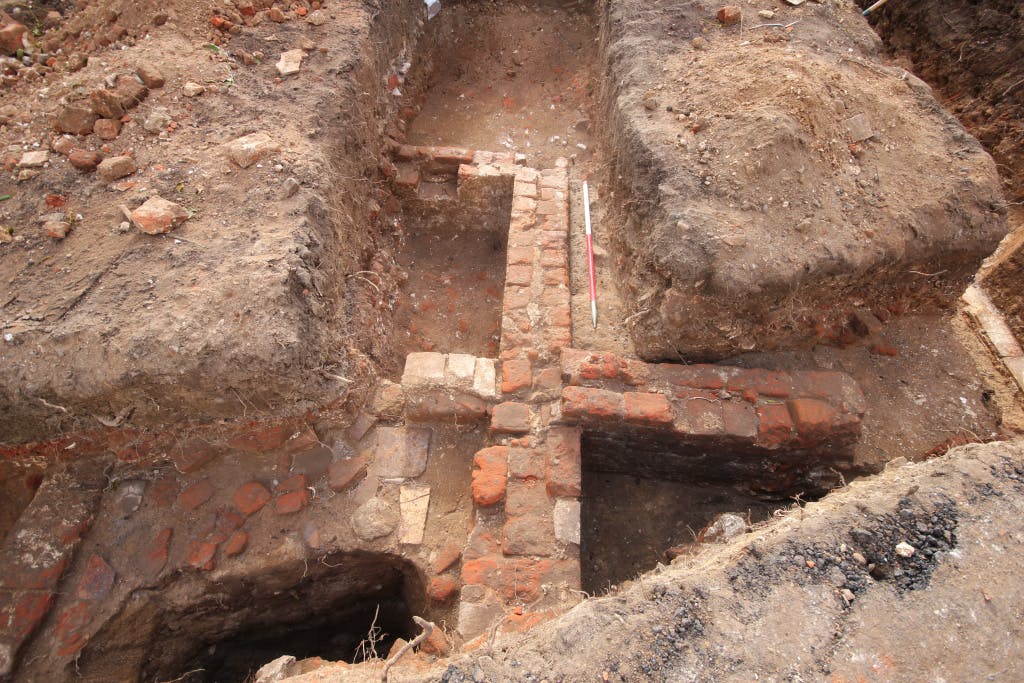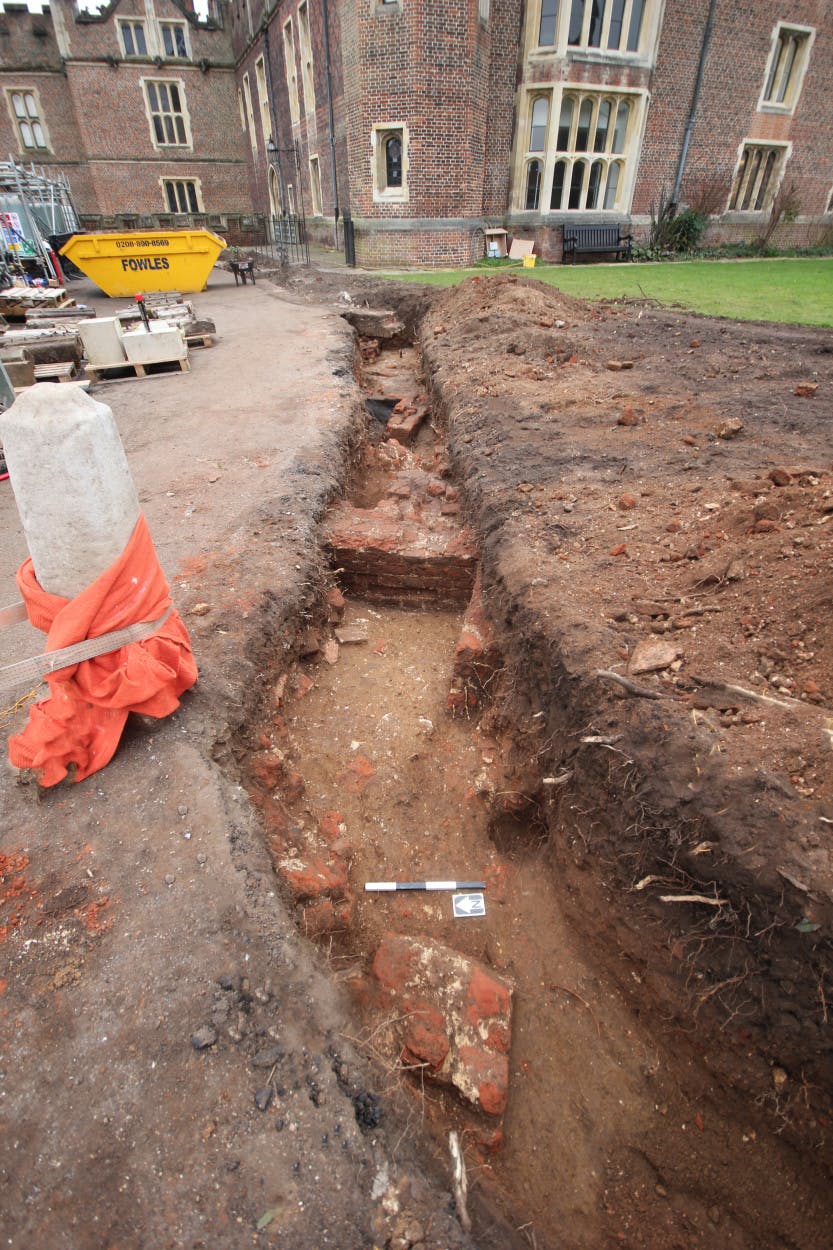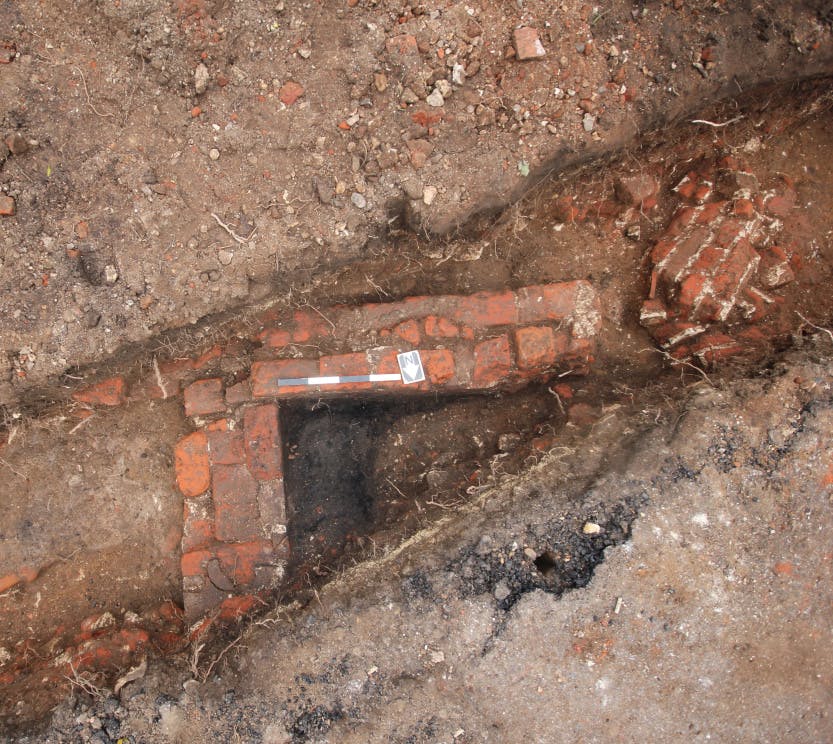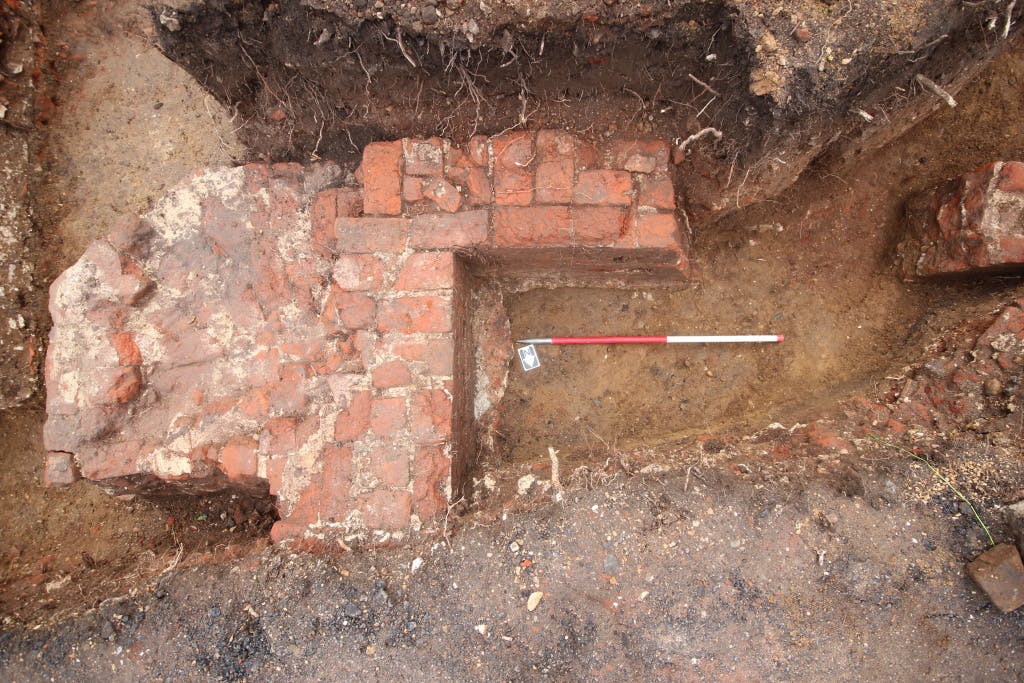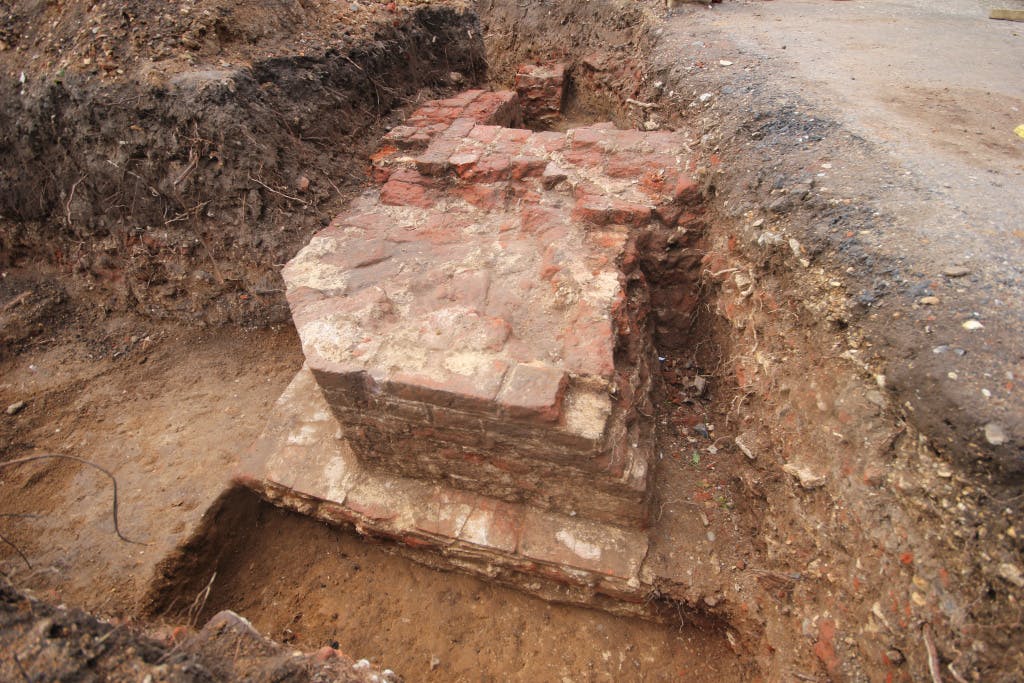Unearthing two early Tudor buildings at Hampton Court Palace
Date: 15 March 2019
Author:
Alexandra StevensonThe West Front has been the main land entrance to Hampton Court Palace for over 500 years. However, it has not always been the majestic approach that you see today, particularly during the relentless building works in the Tudor period. During much of Cardinal Wolsey's and Henry VIII's tenure of Hampton Court, (1515-29 and 1529-47 respectively), the palace would have been a noisy, dusty building site, producing a lot of waste materials.
It has long been thought that many of the yards, workshops, and storehouses used for receiving, crafting, and storing the vast quantities of materials required to build the new palace would have been located on the West Front. However, up until 2017, no evidence for such buildings had been uncovered.
Unexpected discoveries
In 2017, two early Tudor buildings were unexpectedly discovered in a small trench excavated during conservation works on a set of historic railings. The partially exposed remains survived remarkably well despite disturbance from later 18th- and 19th-century intrusions. Named rather insipidly 'Building A' and 'Building B', both were constructed using similar materials and techniques. The bricks used were dated to Cardinal Wolsey's building phase, (1515-1529), or possibly even slightly earlier.
Interestingly, these buildings aligned neither with the extant palace, nor the buried remains of Giles Daubeney's earlier manor house (1495-1514). They do, however, roughly align with another late 15th-century building discovered beneath Base Court by Oxford Archaeology in 2009, interpreted as a mason's lodge. This building reused and remodeled an earlier 14th-century barn or warehouse building and is thought to have been used by stone masons during the construction of Cardinal Woley's Tudor Palace.
Image: Just a few metres from the palace; the excavation in progress. © Historic Royal Palaces

Missing paperwork
Documentary records for the presence of Buildings A and B have yet to be found, but the dating evidence discovered during the excavation supports a late 15th- to early 16th-century construction. The limited stratigraphic sequence, (the different archaeological layers overlying the buildings), makes it difficult to determine when the buildings were abandoned, but it is likely they were demolished by 1537 when Henry VIII constructed the nearby south-west wing of the palace. This is also when the West Front underwent a revamp, creating a new forecourt then known as 'Outer Green Court'.
Working out function and use
Working out what the buildings were used for when you have few material finds and scant evidence for internal features makes things tricky, but not impossible. For instance, one of the things you might notice about Building A is that the internal spaces, of which four were recorded, were remarkably small and irregular. This may be evidence of changes in the building's use and layout during its lifetime and/or that symmetry and aesthetics may not have been a main concern when the building was constructed.
The nature of the occupation deposits and the types of artefacts discovered within the buildings are obvious sources to turn to. Luckily both buildings presented a wonderfully coherent and consistent stratigraphic sequence with clear floor levels and evidence of occupation. These were more extensive in Building A, probably because the floor in this building was a simple compacted earth surface. This allows soil and rubbish to naturally build up, eventually becoming compacted. Building B on the other hand revealed evidence for a rough red tiled floor with less evidence of occupation, (it's harder to trample something into a tile). Nevertheless, the excavation of both buildings recovered lots of iron nails, a small quantity of Tudor pottery sherds, and several Flemish-style glazed floor tiles spread sporadically within the buildup of layers. A characteristic fine ashy layer containing charcoal was recorded in both buildings and a substantial dump of charcoal was also located in Building A, perhaps indicating the presence of a nearby hearth or oven. The presence of so much charcoal, particularly as it was spread across a wide area, and the nature of the other artefacts discovered may suggest an industrial use for the buildings.
But what's that over there?
All the evidence so far points to a utilitarian, functional origin for these buildings. This makes sense, given the buildings' position close to the river and the ever-growing Tudor palace. However, there is one elephant in the room that we have not yet considered. You may have noticed a large angled structure supporting one of the external walls of Building B.
We were only able to uncover a small portion of this feature, so it is difficult to interpret. However, the size of the wall and the high quality of the finished facade suggests a much more substantial building than a simple workshop or warehouse. It could be that it supported an upper floor, or it could be part of an earlier structure repurposed as a workshop. Could it have once been a watchtower? So far we don't fully understand what this puzzling structure is. In the future we aim to uncover the rest of the structure and hopefully discover more about the development of this area. As always with our work at Hampton Court Palace, things are rarely as simple as they first appear. Discovering unexpected archaeology adds to our knowledge of the palace's history, though it often creates more questions than answers, but who doesn't like a good mystery to solve?
Alexandra Stevenson
Assistant Curator
More from our blog

Secrets of Henry VIII's Whitehall: The Archaeology of a Lost Palace
17 August 2023
More than 300 years after the destruction of Whitehall Palace by fire, archaeological excavation and scientific analysis continue to uncover the lost stories and secrets of Henry VIII's once elaborate home.
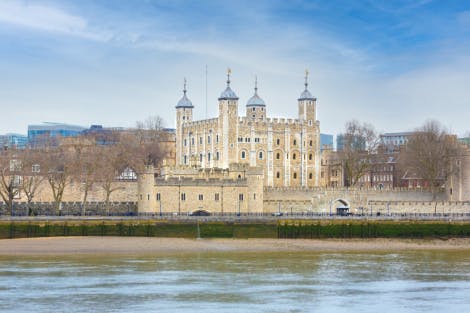
Elizabeth I’s coronation procession from the Tower of London
17 November 2022
Curator Charles Farris recalls Elizabeth’s dramatic procession from the Tower of London to Westminster the day before her coronation.

Caring for the Tower of London through lockdown
11 May 2021
While the Tower of London was closed to the public during the Covid-19 pandemic, much work was underway to protect the fabric of the building and the future of the palace. Assistant Curator Alfred Hawkins reveals one of the important projects that he has been working on behind the scenes.

